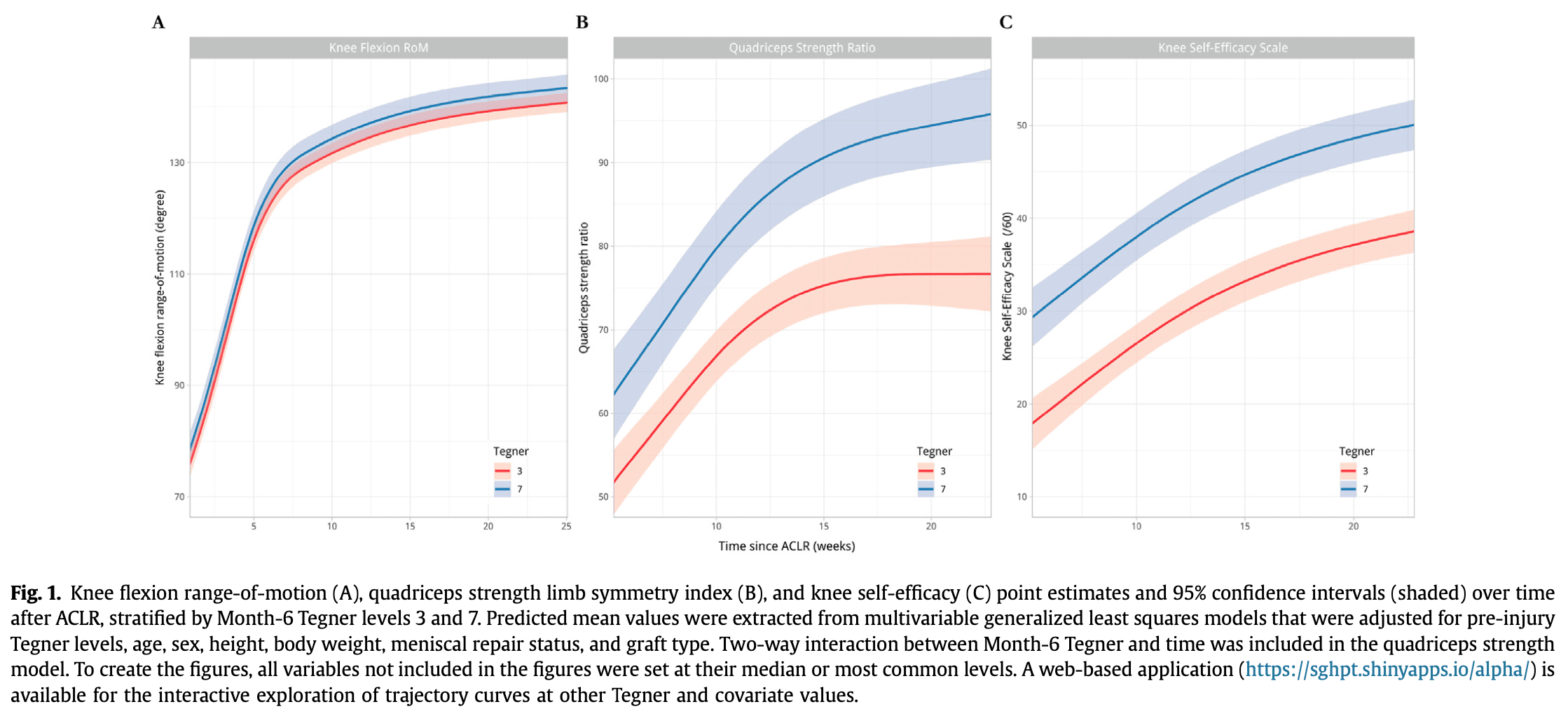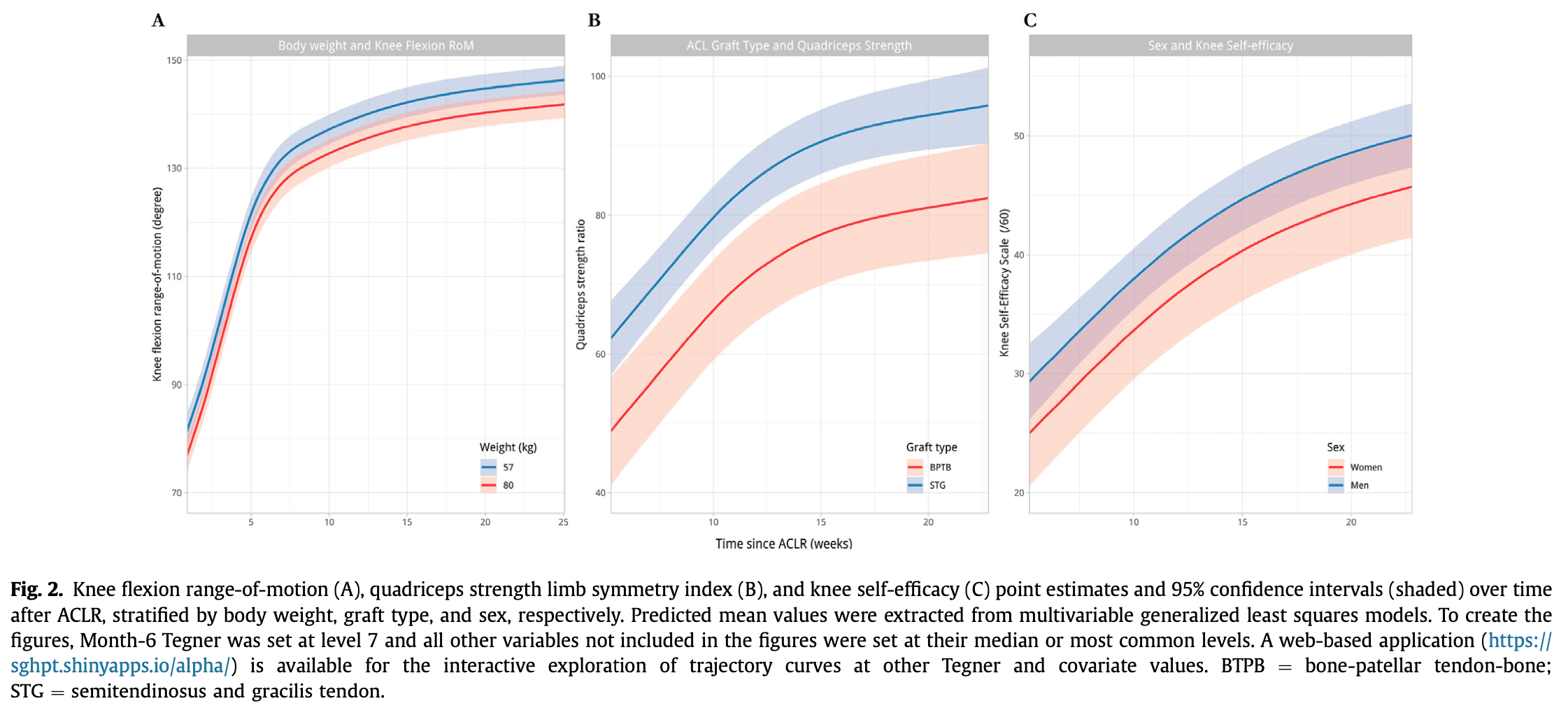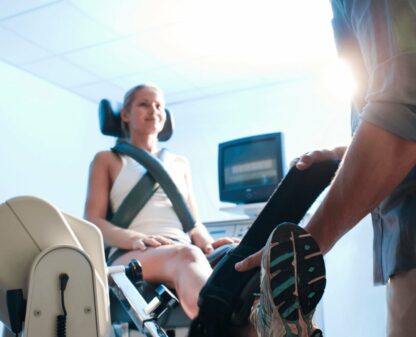Knee Performance and Self-Efficacy Trajectory Curves after ACL Reconstruction

Introduction
Physical and psychological factors after ACL reconstruction (ACLR) should be closely monitored to assess advances in the rehabilitation process and to make adjustments to rehabilitation when needed. One problem that arises is that in many studies these factors are often measured at only one time point. This study provides data of knee flexion range of motion (ROM), quadriceps strength and knee self-efficacy into some interesting trajectory curves from a sample of almost 600 patients over the course of 6 months after ACLR. Interestingly the data was stratified according to preoperative sports activity levels.
Methods
This study included 595 patients after a unilateral ACLR who were younger than 40 years and had no history of previous or concurrent PCL injury or significant neck, back or other knee pain. ACLR was performed using an allograft, bone-patellar tendon-bone or semitendinosus, and gracilis tendon graft. Measurements were obtained preoperatively and at 1, 2, 3 and 6 months postoperatively. Two additional measurements for knee flexion ROM were obtained at 2 and 4 weeks post ACLR.
Active-assisted knee flexion ROM was measured when the patient maximally flexed the knee with the assistance of a towel in long sitting position. Quadriceps strength was obtained from isotonic one-repetition maximum testing between 90° and 40° of knee flexion. The strength was converted in a limb symmetry index (LSI) using the following formula [involved limb/uninvolved limb]x100%. Self-reported knee self-efficacy was obtained through the physical activity subscale from the Knee Self-Efficacy Scale (K-SES), where higher scores indicate more confidence in performing physical activities involving the operated leg. Sports activity levels were gathered through the Tegner Activity Score which assesses the type and frequency of sports and work participation. The scores range from 0-10 with 0 indicating severe disability and 10 indicating participation in competitive knee-demanding sports at the elite level.
Results
Knee flexion ROM improved greatly in the first two months, whereafter the improvements were more gradual. Greater improvement in ROM was related to higher activity levels at 6 months. Quadriceps strength LSI mostly improved in the first 4 months and more gains in LSI were also associated with higher activity levels. Knee self-efficacy improved over the first 6 months but there was no association with the Tegner activity levels, however, greater knee self-efficacy was significantly and consistently associated with higher activity levels. Several confounders were used to adjust the data and these analyses revealed that patients with a higher BMI achieved less knee flexion ROM. Concurrent meniscal repair and older age were also associated with fewer improvements in ROM. Considering quadriceps strength, patients receiving a bone-patellar tendon-bone graft achieved less LSI than patients receiving a hamstring autograft, and concomitant meniscal repair was also associated with lower LSI.


Talk nerdy to me
Interesting analyses were performed and several good aspects can be noted. The analyses were adjusted for 7 covariates defined a priori based on the literature review. The multivariable analyses provide detailed information on knee performance and self-efficacy trajectories across different levels of sports activity and other confounders. A limitation of this study is that the 95% confidence intervals for some parameters were less precise due to relatively small numbers of patients in certain subgroups.
Take home messages
This study provides the clinician with an interesting perspective to which the individual patient can be compared. An interactive website where the rehabilitation trajectory can be visualized was provided at the following link: https://sghpt.shinyapps.io/alpha/
Reference
LEARN TO OPTIMIZE REHAB & RTS DECISION MAKING AFTER ACL RECONSTRUCTION
Sign up for this FREE webinar and top leading expert in ACL rehab Bart Dingenen will show you exactly how you can do better in ACL rehab and return to sport decision making



